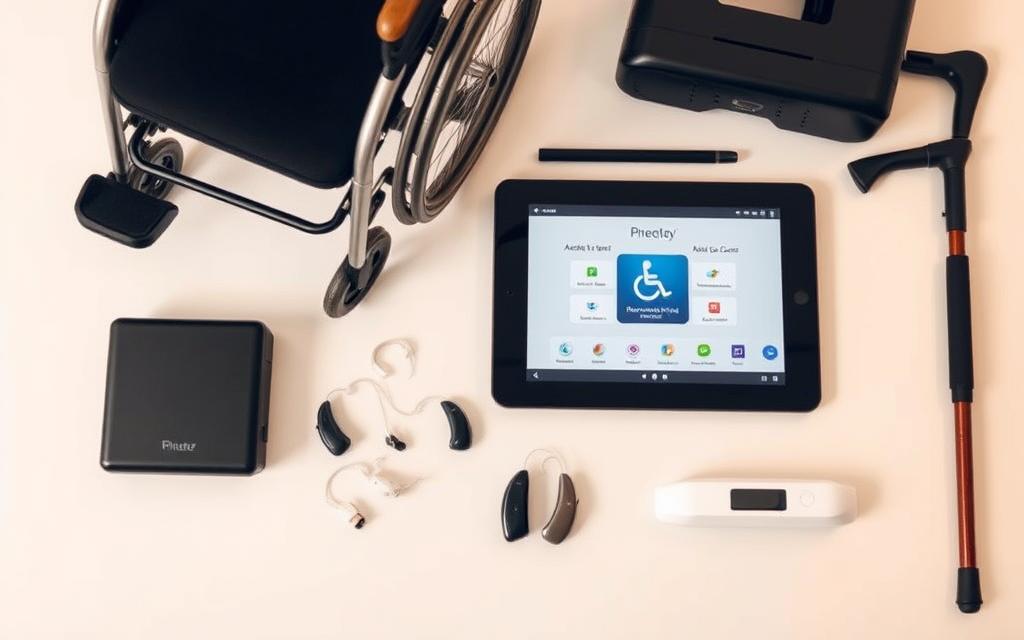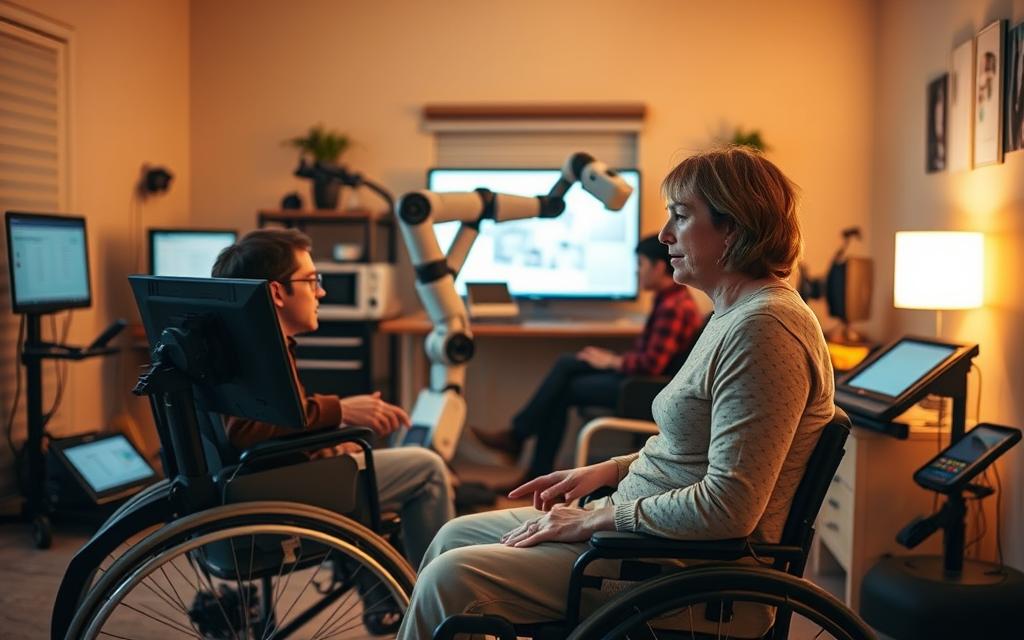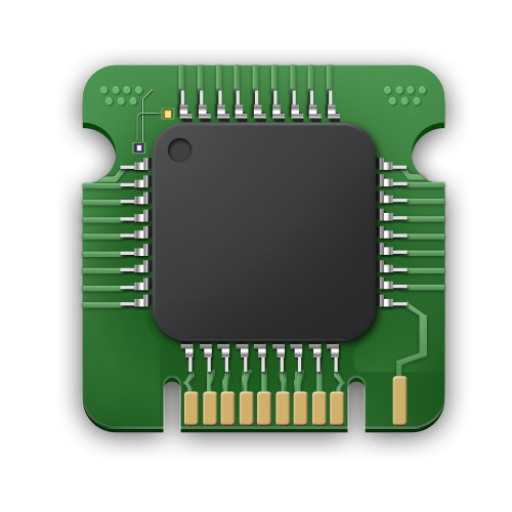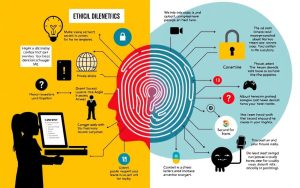Assistive technology is revolutionizing the way individuals with disabilities, older adults, and those with long-term health conditions live, interact, and participate in society.
It encompasses a broad range of devices and products designed to improve functionality, independence, and quality of life, providing essential support for persons with disabilities and enhancing overall health.
This comprehensive guide will explore the concept of assistive technology and its profound impact on daily living, examining its historical development and evolution into a critical component of healthcare and education.
By understanding the significance of technology in breaking down barriers, we can unlock the full potential of individuals and promote fuller participation in all aspects of life.
Understanding Assistive Technology
To understand assistive technology, it’s essential to recognize its role in supporting people with disabilities through various products and systems. Assistive technology is designed to bridge the gap in functionality, enabling individuals to perform tasks that might otherwise be difficult or impossible.
Definition and Scope
Assistive technology encompasses a broad range of devices and systems that support individuals with disabilities, restricted mobility, or other impairments. These can include physical products like wheelchairs, glasses, and hearing aids, as well as digital solutions such as speech recognition software and captioning. The scope of assistive technology is vast, ranging from simple, low-tech aids to complex, high-tech systems like eye-gaze control devices and smart home technology.
Historical Development
The historical development of assistive technology has been marked by significant innovations and milestones. From early rudimentary aids to today’s sophisticated digital solutions, assistive technology has evolved substantially over time. As Dr. Stephen Hawking once said, “The greatest enemy of knowledge is not ignorance, it is the illusion of knowledge.” This quote highlights the importance of continuous innovation in assistive technology. Advances in technology and changing attitudes toward disability have driven this evolution, expanding the range of available assistive products and enhancing their effectiveness.
By understanding the definition, scope, and historical development of assistive technology, we can appreciate its fundamental purpose: to enhance the functionality and independence of individuals with disabilities.
What is Assistive Technology?
Assistive technology is a diverse field that comprises numerous devices, products, and systems aimed at enhancing the lives of people with disabilities. It plays a crucial role in improving the quality of life for individuals with various impairments, enabling them to live more independently and participate fully in society.
Key Characteristics
The key characteristics of assistive technology include adaptability, accessibility, and user-centered design principles. These features are essential in making assistive technology solutions effective and user-friendly. Adaptability refers to the ability of a device or system to be adjusted or modified to meet the specific needs of an individual. Accessibility ensures that the technology is usable by people with disabilities, often through the incorporation of special features such as voice commands or screen readers.
To illustrate the key characteristics, let’s consider the following table:
| Characteristic | Description | Example |
|---|---|---|
| Adaptability | Ability to adjust or modify to meet individual needs | Adjustable font sizes on a digital device |
| Accessibility | Usability by people with disabilities | Screen reader software on a computer |
| User-Centered Design | Design that prioritizes user needs and preferences | Simple, intuitive interface on a communication aid |
Assistive Technology vs. Aids for Daily Living
While often related, assistive technology and “aids for daily living” are not interchangeable terms. Assistive technology products can be classified as medical devices if they are intended for a medical purpose, as stated by the manufacturer, and are subject to regulations such as the UK Medical Devices Regulations 2002. On the other hand, aids for daily living are products that assist individuals with daily tasks but may not necessarily have a medical purpose.
For instance, a wheelchair is considered assistive technology because it is designed to assist individuals with mobility impairments. In contrast, a kitchen utensil with an enlarged handle is an aid for daily living, as it is designed to make daily tasks easier but is not necessarily a medical device.

Types of Assistive Technology
Assistive technology is categorized into several types based on the functional needs they address. These technologies are designed to enhance the quality of life for individuals with disabilities by providing them with the tools necessary to overcome specific challenges.
Mobility Assistance Devices
Mobility assistance devices include manual and powered wheelchairs, mobility scooters, prosthetics, and walking aids. These devices are crucial for enhancing independent movement. For instance, wheelchair users can benefit from lightweight, durable frames that improve maneuverability.

Communication and Hearing Aids
Hearing aids and other communication assistance technology range from simple hearing aids to complex augmentative and alternative communication (AAC) devices and speech-generating technology. These solutions help individuals with hearing impairments to communicate more effectively.

Vision Assistance Tools
Vision assistance tools include screen readers, magnification software, Braille displays, and navigation aids. These tools are designed to support individuals with visual impairments, enabling them to access and interact with digital information.

Cognitive Support Systems
Cognitive support systems comprise technology that assists with memory, organization, time management, and learning. Examples include reminder systems, planning software, and educational tools. These systems help individuals with cognitive disabilities to manage daily tasks more effectively.

In conclusion, assistive technology encompasses a wide range of devices and technology designed to meet various needs. By understanding the different types of assistive technology available, individuals can make informed decisions about the tools that best suit their requirements.
Benefits of Assistive Technology
Assistive technology has revolutionized the lives of individuals with disabilities, offering numerous benefits that enhance their overall well-being. The use of assistive technology can have a significant impact on daily life, enabling individuals to perform tasks with greater ease and independence.
Enhanced Independence and Quality of Life
Assistive technology enhances independence and quality of life by providing individuals with the tools they need to navigate their daily environments effectively. For instance, wheelchairs and mobility aids enable people to move around freely, while communication aids like hearing aids and speech-generating devices facilitate social interaction. By promoting autonomy, assistive technology improves overall health and well-being.
Improved Educational Outcomes
The integration of assistive technology in educational settings has been shown to improve educational outcomes for students with disabilities. Tools such as text-to-speech software, braille displays, and adaptive keyboards help students access curriculum content, thereby supporting diverse learning styles and needs. For more information on the benefits of assistive technology in education, visit LDRFA’s resource on assistive technology.
Socioeconomic Benefits
The socioeconomic benefits of assistive technology are substantial, including reduced healthcare costs, increased participation in the workforce, and decreased dependency on caregivers. By enabling individuals to work and contribute to their communities, assistive technology has a positive effect on the economy. As technology continues to evolve, its potential to drive social and economic change through assistive solutions is vast.
Assistive Technology in Different Contexts
Assistive technology is transforming various environments by providing tailored solutions to meet specific needs. This versatility enables individuals with disabilities to participate fully in different aspects of life.
Educational Settings
In educational settings, assistive technology supports inclusive education through various tools. These include note-taking software, reading assistance devices, organizational aids, and accessible educational materials. For instance, text-to-speech software can help students with dyslexia, while speech-to-text software assists those with writing difficulties.

Workplace Accommodations
Assistive technology enables employment opportunities by providing modified workstations, communication tools, and productivity enhancements. For example, ergonomic keyboards and mice can help employees with physical disabilities, while screen readers assist those with visual impairments. According to a study on technology’s impact, such accommodations can significantly improve work efficiency.
Healthcare Applications
In healthcare, assistive technology supports rehabilitation, home healthcare, medication management, and remote monitoring. Devices such as wearable sensors and telehealth platforms enable patients to manage their health more effectively. For instance, medication reminder systems can help patients adhere to their treatment plans, improving overall health outcomes.
| Context | Assistive Technology Examples | Benefits |
|---|---|---|
| Educational Settings | Note-taking software, reading assistance devices | Inclusive education, improved learning outcomes |
| Workplace Accommodations | Ergonomic keyboards, screen readers | Enhanced productivity, employment opportunities |
| Healthcare Applications | Wearable sensors, telehealth platforms | Improved health outcomes, rehabilitation support |
Access to Assistive Technology
The disparity in access to assistive technology is a pressing concern globally. Despite its potential to enhance the quality of life for individuals with disabilities, many barriers hinder equitable access to these essential devices.
Global Disparities in Access
The WHO and UNICEF Global report on assistive technology (2022) highlights significant inequities in access to assistive technology. In some low-income countries, as few as 3% of people have access to the assistive products they need, compared to 90% in some high-income countries. This disparity underscores the need for global initiatives to bridge the gap in access to assistive technology.
- Limited availability of assistive products in low-income countries.
- Significant differences in access rates between high-income and low-income countries.
- The need for global cooperation to improve access to assistive technology.

Barriers and Challenges
Several barriers impact access to assistive technology, including low awareness, high costs, limited physical access, inadequate product range, procurement challenges, workforce capacity gaps, inadequate policy, insufficient funding, and sociodemographic obstacles. These challenges disproportionately affect populations in rural areas, low-income communities, and developing nations.
To address these issues, global organizations are working to improve awareness, affordability, and availability of assistive technology. Initiatives include policy reforms, funding allocations, and capacity-building programs aimed at enhancing equitable access to assistive technology worldwide.
The Future of Assistive Technology
The landscape of assistive technology is evolving, driven by innovations that promise to enhance accessibility and independence. As we look to the future, it’s clear that emerging technologies will play a crucial role in shaping the assistive technology landscape.
Innovative Solutions
Cutting-edge technologies such as artificial intelligence, machine learning, and brain-computer interfaces are creating new possibilities for assistive solutions. For instance, AI-powered devices can now learn and adapt to an individual’s needs, providing more personalized support. According to a recent study, the integration of these technologies is expected to significantly improve the quality of life for individuals with disabilities.

Policy and Advocacy Developments
The future of assistive technology is not just about technological advancements; it’s also about creating an environment that supports their adoption. The WHO and UNICEF Global report on assistive technology (2022) provides guidance and recommendations for governments and stakeholders to enhance access to assistive technology. Key developments include evolving regulatory frameworks and international standards that promote universal design and accessibility.
| Development | Description | Impact |
|---|---|---|
| Regulatory Frameworks | Evolving to support new technologies | Enhanced safety and efficacy |
| International Standards | Promoting universal design | Increased accessibility |
| Advocacy Efforts | Raising awareness and promoting policy change | Improved access to assistive products |
Conclusion
Ultimately, the impact of assistive technology on the quality of life for persons with disabilities is profound and multifaceted. By enhancing access to various products and services, it enables individuals to participate fully in their families, communities, and all areas of society. This not only improves their health and safety but also contributes to the achievement of the Sustainable Development Goals.
To ensure that no one is left behind, it is crucial to continue innovating and implementing supportive policies that make assistive technology accessible to all who need it. Collaboration among policymakers, healthcare providers, educators, employers, and technology developers is key to advancing this field.







